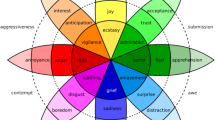Abstract
This investigation extends prior research on the impact of audio stimuli in Virtual Reality (VR) environments, with an enhanced focus on understanding the relationship between audio stimuli and the level of immersion, as indicated by stress levels. Using the State-Trait Anxiety Inventory (STAI) for psychological assessment and heart rate variability for physiological responses, this study examines the interplay of visual and auditory stimuli across four diverse VR scenarios. These scenarios include combinations of city and forest environments paired alternately with matching and contrasting auditory cues. Correlation analysis was employed to determine how audio stimuli influence the level of immersion, reflected through variations in heart rate and STAI-derived stress indicators. Participants’ responses were continuously monitored for real-time physiological effects, while stress assessments were conducted after exposure to each scenario. This methodical approach aims to uncover significant sensory interactions that affect immersion in VR, potentially guiding the design and application of VR technologies across various disciplines.
Access this chapter
Tax calculation will be finalised at checkout
Purchases are for personal use only
Similar content being viewed by others
References
Apostolou, K., Liarokapis, F.: A systematic review: the role of multisensory feedback in virtual reality. In: 2nd International Conference on Intelligent Reality (ICIR), pp. 39–42. IEEE (2022)
Basharat, A., et al.: Virtual reality as a tool to explore multisensory processing before and after engagement in physical activity. Front. Aging Neurosci. 15, 1207651 (2023)
Canales, R., Jörg, S.: Performance is not everything: audio feedback preferred over visual feedback for grasping task in virtual reality. In: Proceedings of the 13th ACM SIGGRAPH Conference on Motion, Interaction and Games, pp. 1–6 (2020)
Chen, H., Dey, A., Billinghurst, M., Linderman, R.W.: Exploring the design space for multi-sensory heart rate feedback in immersive virtual reality. In: Proceedings of the 29th Australian conference on computer-human interaction, pp. 108–116 (2017)
Chen, T., Wu, Y.S., Zhu, K.: Investigating different modalities of directional cues for multi-task visual-searching scenario in virtual reality. In: Proceedings of the 24th ACM Symposium on Virtual Reality Software and Technology, pp. 1–5 (2018)
Cooper, N., Milella, F., Pinto, C., Cant, I., White, M., Meyer, G.: The effects of substitute multisensory feedback on task performance and the sense of presence in a virtual reality environment. PLoS ONE 13(2), e0191846 (2018)
Grassini, S., Laumann, K., de Martin Topranin, V., Thorp, S.: Evaluating the effect of multi-sensory stimulations on simulator sickness and sense of presence during HMD-mediated VR experience. Ergonomics 64(12), 1532–1542 (2021)
Halbig, A., Latoschik, M.E.: A systematic review of physiological measurements, factors, methods, and applications in virtual reality. Front. Virtual Reality 2, 694567 (2021)
Hirao, Y., Kawai, T.: Augmented cross-modality: Translating the physiological responses, knowledge, and impression to audio-visual information in virtual reality. Electron. Imaging 31, 1–8 (2018)
Kamińska, D., Smólka, K., Zwoliński, G.: Detection of mental stress through EEG signal in virtual reality environment. Electronics 10(22), 2840 (2018)
Kim, H., et al.: Effect of virtual reality on stress reduction and change of physiological parameters including heart rate variability in people with high stress: an open randomized crossover trial. Front. Psychiatry 12, 614539 (2021)
Kim, J., Luu, W., Palmisano, S.: Multisensory integration and the experience of scene instability, presence and cybersickness in virtual environments. Comput. Hum. Behav. 113, 106484 (2020)
Liu, F., Kang, J.: Relationship between street scale and subjective assessment of audio-visual environment comfort based on 3D virtual reality and dual-channel acoustic tests. Build. Environ. 129, 35–45 (2018)
Marchiori, E., Niforatos, E., Preto, L.: Analysis of users’ heart rate data and self-reported perceptions to understand effective virtual reality characteristics. Inf. Technol. Tourism 18, 133–155 (2018)
Melo, M., Gonçalves, G., Monteiro, P., Coelho, H., Vasconcelos-Raposo, J., Bessa, M.: Do multisensory stimuli benefit the virtual reality experience? A systematic review. IEEE Trans. Visual Comput. Graphics 28(2), 1428–1442 (2020)
Oing, T., Prescott, J.: Implementations of virtual reality for anxiety-related disorders: systematic review. JMIR serious games 6(4), e10965 (2018)
Ranasinghe, N., Jain, P., Tolley, D., Karwita Tailan, S., Yen, C.C., Do, E.Y.L.: Exploring the use of olfactory stimuli towards reducing visually induced motion sickness in virtual reality. In: Proceedings of the 2020 ACM Symposium on Spatial User Interaction, pp. 1–9 (2020)
Riches, S., Azevedo, L., Bird, L., Pisani, S., Valmaggia, L.: Virtual reality relaxation for the general population: a systematic review. Soc. Psychiatry Psychiatr. Epidemiol. 56, 1707–1727 (2021)
Salgado, D.P., Martins, F.R., Rodrigues, T.B., Keighrey, C., Flynn, R., Naves, E.L.M., Murray, N.: A QoE assessment method based on EDA, heart rate and EEG of a virtual reality assistive technology system. In: Proceedings of the 9th ACM Multimedia Systems Conference, pp. 517–520 (2018)
Šalkevicius, J., Damaševičius, R., Maskeliunas, R., Laukienė, I.: Anxiety level recognition for virtual reality therapy system using physiological signals. Electronics 8(9), 1039 (2019)
Sanchez, G.M.E., Van Renterghem, T., Sun, K., De Coensel, B., Botteldooren, D.: Using Virtual Reality for assessing the role of noise in the audio-visual design of an urban public space. Landsc. Urban Plan. 167, 98–107 (2017)
Tabbaa, L., et al.: Vreed: Virtual reality emotion recognition dataset using eye tracking and physiological measures. Proc. ACM Interact. Mobile, Wearable Ubiquit. Technol. 5(4), 1–20 (2021)
Wu, F., Thomas, J., Chinnola, S., Rosenberg, E.S.: Comparison of audio and visual cues to support remote guidance in immersive environments. In: ICAT-EGVE, pp. 121–130 (2020)
Wang, X., Shi, Y., Zhang, B., Chiang, Y.: The influence of forest resting environments on stress using virtual reality. Int. J. Environ. Res. Public Health 16(18), 3263 (2019)
Zeng, N., Pope, Z., Lee, J.E., Gao, Z.: Virtual reality exercise for anxiety and depression: a preliminary review of current research in an emerging field. J. Clin. Med. 7(3), 42 (2018)
Shattuck, D.W.: Multiuser virtual reality environment for visualising neuroimaging data. Healthc. Technol. Lett. 5(5), 183–188 (2018)
Moosavi, M.S., et al.: The influence of audio sensory input on the anxiety level of the VR Users. In: International Conference on Future Trends in Smart Communities (ICFTSC), pp. 237–242. IEEE (2022)
Spielberger, C.D., Gonzalez-Reigosa, F., Martinez-Urrutia, A., Natalicio, L.F.S., Natalicio, D.S.: The state-trait anxiety inventory. Rev. Interamericana de Psicologia/Interamerican J. Psychol. 5, 3–4 (1971)
Acknowledgments
With profound gratitude, the authors gratefully acknowledge the support received from the France Embassy in Malaysia. We also acknowledge the institutional support provided by Asia Pacific University of Technology and Innovation, Kuala Lumpur, Malaysia, in collaboration with the Arts et Metiers Institute of Technology LISPEN, HESAM Université, Chalon-Sur-Saone, France. Their support and collaboration were instrumental in facilitating this research endeavour.
Author information
Authors and Affiliations
Corresponding authors
Editor information
Editors and Affiliations
Rights and permissions
Copyright information
© 2025 The Author(s), under exclusive license to Springer Nature Switzerland AG
About this paper
Cite this paper
Kuan, Y.J., Moosavi, M.S., Guillet, C., Yee, A.S.V., Merienne, F. (2025). Analyzing the Interplay of Visual and Auditory Stimuli on Human Physiology and Stress Levels in Virtual Environment. In: Duffy, V.G. (eds) HCI International 2024 – Late Breaking Papers. HCII 2024. Lecture Notes in Computer Science, vol 15376. Springer, Cham. https://doi.org/10.1007/978-3-031-76809-5_8
Download citation
DOI: https://doi.org/10.1007/978-3-031-76809-5_8
Published:
Publisher Name: Springer, Cham
Print ISBN: 978-3-031-76808-8
Online ISBN: 978-3-031-76809-5
eBook Packages: Computer ScienceComputer Science (R0)




